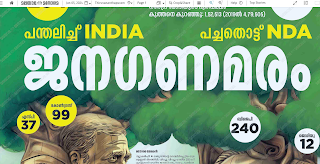The main purpose of an editorial is to analyze, interpret, criticize, persuade, or praise issues of the day.
The structure of an editorial consists of the following parts:
Lead or statement: The editorial starts with a statement opposing, criticizing, or supporting (which is very rare) a newsworthy incident. This explains the incident being referred to and provides essential details about the incident. This is important because the editorial may be written a few days after an incident. The explanation will also allow the reader to recollect the story if he or she has forgotten the details.
Explanation: After the lead or introduction, the editorial will now explain the official position of the newspaper. It will bring in facts that supports its official position. It will also refute opposite viewpoints and tries to convince its readers why this editorial position is the best one. The language will be forceful and strong to make the opinion pretty clear.
Conclusion: The concluding remarks will offer solutions, analogies, or pointers to the readers. It may also offer to say what turn the events might take and what will be the impact.
Editorial sample
The following is a sample editorial written by this blogger following the rape and murder of two girls in the state of Uttar Pradesh on May 27.No country for women?
The rape and murder of two girls in Badaun of Uttar Pradesh (UP) is a callous and despicable act. The victims hailing from the backward community were found missing from their homes and later found hanging from a tree close to their homes. Post-mortem examinations later revealed that the girls were raped before they were hanged. While the UP administration has ordered a CBI probe into the incident, the case raises several disturbing questions on the administration of law and order in Uttar Pradesh. The delay in launching investigations reveals the total insensitivity on the part of men in uniform and raises suspicions about a possible collusion. While the issue has attained political overtones with the Congress and Bahujan Samaj Party latching on to it, the administration did not help matters by letting out irresponsible statements and media bytes. The announcements of a fast track court and the CBI probe should not be seen as ways to soften the political embarrassment triggerd by the controversy and the rape case. The case should be allowed to be taken to its logical end and exemplary punishment meted out to the perpetrators of the crime. This is not to forget the fact that this is not UP's issue alone, and there is no room for complacency for the rest of India where the record of preventing sexual aggression is not a tad better.The administration should also not lose focus on the urgent need in dealing with sexual crimes against women in the state. The recurring incidents of rape and other crimes against women indicate that nothing has changed after the civil society movement and media furore over the Delhi rape case that went on to topple the Sheila Dixit government in New Delhi. The constant media glare on such incidents and repeated affirmations by our elected leaders and representatives seem to have failed to sensitize the people and the police department about the sexual crimes against innocent and vulnerable sections of Indian society. In fact, the voices demanding justice and massive demonstrations were missing in this case and several others unlike the events that unfolded after the Delhi rape case. Exemplary punishment and gender sensitization are the ways to go, but the Central government must make a beginning in reforming the tainted and callous police administration that is still deeply rooted in some ancient era in a developing country like India.
Op-eds
Do not confuse editorials with "op-eds". Op-eds are articles or commentaries published on the editorial pages. Op-eds are written by staffers as well as freelancers, and columnists.


No comments:
Post a Comment